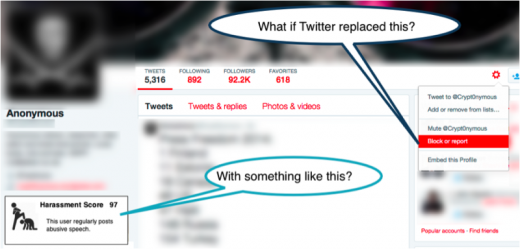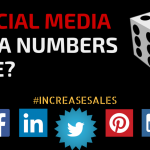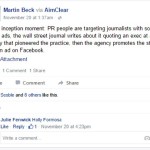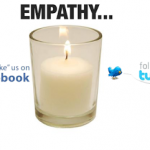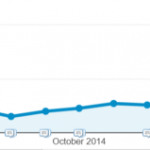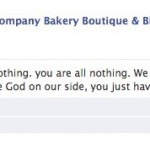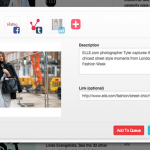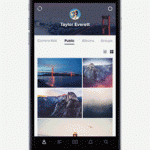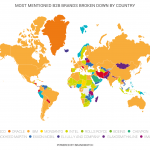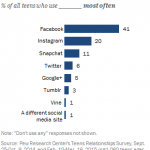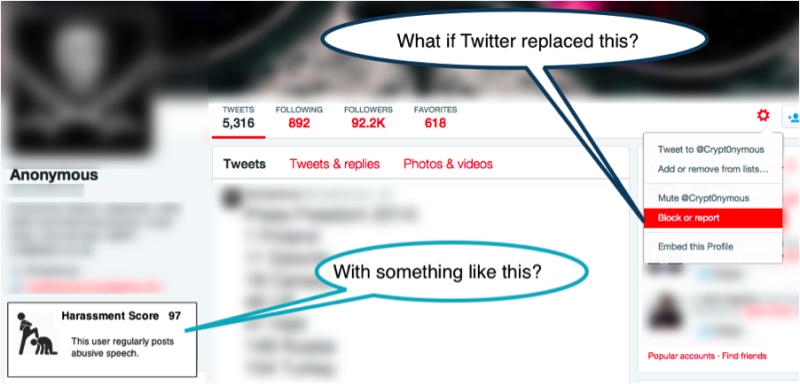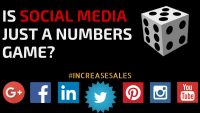A thought To Unmask Hate On Twitter, without leaving behind Anonymity
Harassment and hate speech threaten to poison the social media waters, making them toxic for customers and marketers. Columnist Eric Schwartzman proposes an answer.
With any marketing medium, there’s a certain quantity of pollution that may create a toxic surroundings unsuitable for brand job. With direct mail, the more irrelevant direct mail a person receives, the more challenging it’s going to be to break through and get your piece opened. With electronic mail, it’s junk mail.
On social media, there’s the risk of different users — both “pals” or different manufacturers — poisoning the medium thru spam or simply simple dangerous habits. As entrepreneurs, and as customers of social media, we need to demand more from the networks. in this piece, I’ll suggest a treatment that could make social networks far more hospitable locations for all involved.
opposite to former fb CMO Randi Zuckerberg’s comment that “Anonymity on the web has to leave,” the issue isn’t anonymous customers, it’s a lack of transparency from the social networks.
Anonymity Doesn’t Have to go
take into consideration it.
Anonymity is dangerous and good. It’s unhealthy as a result of nameless users hiding at the back of pseudonymous screen names can submit no matter defamatory hate speech they chose, with out a concern of accountability.
however it’s excellent too, when you consider that, as Justice John Paul Stevens wrote within the 1995 Supreme courtroom determination in McIntyre v. Ohio Elections commission:
“Anonymity is a shield from the tyranny of the majority…. It thus exemplifies the purpose behind the bill of Rights, and of the primary amendment specifically: to offer protection to unpopular individuals from retaliation — and their ideas from suppression — on the hand of an intolerant society. the appropriate to remain nameless is also abused when it shields fraudulent habits. however political speech with the aid of its nature will from time to time have unpalatable penalties, and, basically, our society accords higher weight to the worth of free speech than to the hazards of its misuse.”
So unmasking identities isn’t the reply. Memorializing bad behavior is.
How would possibly Transparency Be increased?
In her departing Sunday Bits column as digital know-how and culture reporter on the new york occasions, Jenna Wortham explored the inherent rigidity between free speech and harassment, asking what else Twitter could do to curb verbal abuse. after all, “Twitter has been relatively agile about tweaking its services and rolling out new features — when it has chosen to do so,” she writes.
What may they do to discourage hate speech, on-line bullying and defamation? It’s not a mere difficulty. Wortham notes a Pew research survey from 2014 that discovered that seventy three% of adult internet users have witnessed online harassment, and 40% have experienced it themselves.
“Given Twitter’s capacity to be creative…i wonder what else it usually is doing to curb verbal abuse” requested Wortham.
in reality, social networks might finish unhealthy habits via making it more uncomplicated to establish trolls. however not through revealing their identities.
Ending anonymity and hiding dangerous conduct by using doing away with it is no longer the answer. instead of disappearing harassment, why not grow to be it right into a badge of disgrace?
A Badge Of disgrace
What if Twitter, fb and Yik Yak displayed the alternative of your Klout rating for your profile? What if they delivered a Harassment or Hater ranking to each consumer profile, so you want to simply examine that user’s past behavior at a look?
users could keep their anonymity and social networks wouldn’t must change into arbiters of free speech.
All they’d must do is leverage their own statistical analytics, knowledge mining tactics and business intelligence understand-how one can name out the unhealthy actors. the same expertise used to focus on promoted tweets or recommend new folks to practice could be used to determine drawback accounts. they could even introduce a Human Rights rating and a Racial Sensitivity rating as well, and strengthen icons that accompany each and every tweet despatched from that account.

technology is not the challenge. the true questions is what it is going to take to get the social networks to make this a precedence?
Even with the Federal exchange fee breathing down Madison Avenue’s neck, some advertisers nonetheless withstand making required FTC social media disclosures after they rent social media experts to hawk products by means of their personal profiles.
“simply Be good” gained’t cut It
sadly, that you could’t go away this one up to individuals, trusting them to simply be good. And government regulators lack the sophistication, instruments and agility to hold the social networks in charge for offering this degree of transparency.
It’s an issue of morality. The social networks have a accountability to make it straightforward for customers to look the true colors of their members. And, more very nearly, this poisonous content pollutes the social media waters that we all swim in.
within the social age, living up to the promise of “don’t be evil” requires greater than just a “report unsolicited mail” button.
marketing Land – web advertising and marketing information, strategies & tips
(161)

